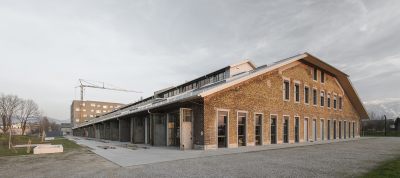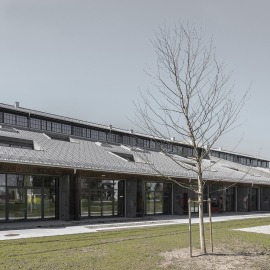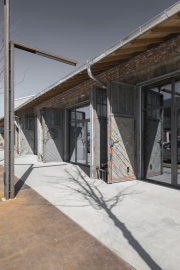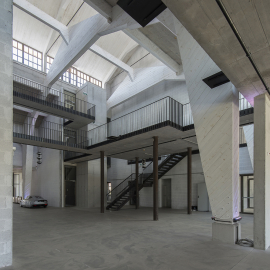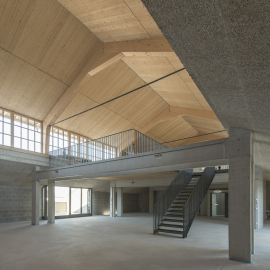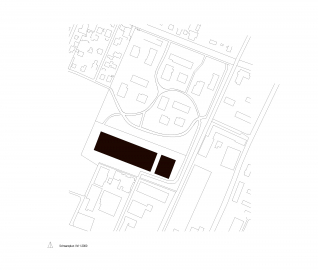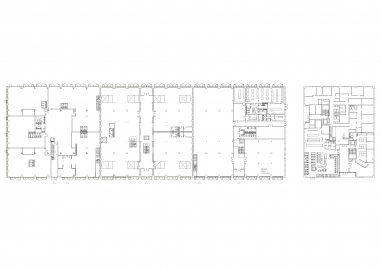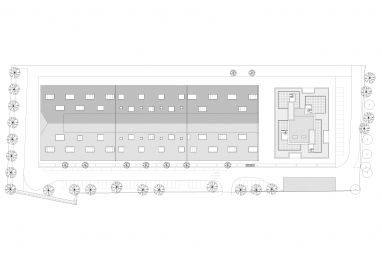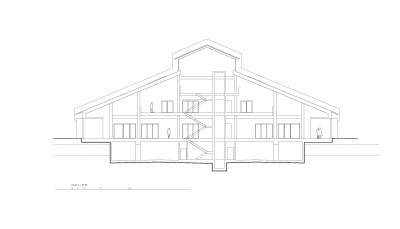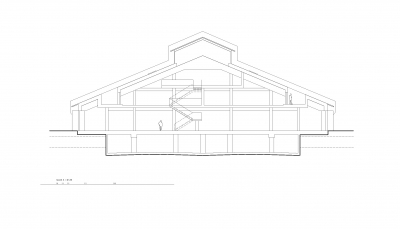Panzerhalle
The Panzerhalle, situated in the heart of Salzburg, Austria, was built in 1939 and expanded in 1952 as workshop and garage building for the Austrian Federal Army. Its adaptation enforces the loft character by the creation of multi-story, composite units appropriate for various commercial uses.
The Panzerhalle serves as landmark regarding both its size and the characteristic appearance. The long-stretched building mediates between the commercial area in the south and the newly built residential buildings in the north. The Panzerhalle enriches the district with a market hall, restaurants, loft offices, exhibition and commercial areas, a medical center and apartments for business-related housing. Due to its location between the city center and the proximity to the highway, the location is easily accessible for individual traffic as well as by public transport and very well connected to the cycle path network. The construction of an underground parking space leads to mostly car-free outdoor facilities used as extended work, restaurant or recreation areas.
CONSERVATION AND INNOVATION IMPULSE
The revitalization of the Panzerhalle area, which was formerly closed for the public, contributes to a revival of the district and adds to its identity.
USER VALUE
The revaluation and restructuring of the building creates a unique and highly prestigious property for Salzburg. The mix of various uses helps to form a network of innovative and dynamic businesses in the fields of trade, business and creative professionals.
FUNCTIONALITY
Due to the generosity of the structure, lofts adapted to individual requirements are offered. The roof area has been treated as a fifth facade for the three existing building elements, and recesses are used to create spaces for the exhibition, sales, office and residential areas. Thanks to the generous skylight glazing integrated into the roof area and the lantern in the ridge, deliberate views and directed lighting are created inside the building.
The Panzerhalle is an example for a sensible redensification and the increasingly important reuse of existing structures which adds to the quality of the urban living space. The adaptation decreases the emissions and environmental impacts compared to a demolition and subsequent new construction. The mixture of allocation possibilities and the flexible room concept allows to adapt the building to future trends and is interesting for both tenants and for buyers. With spaces also suitable for temporal occupancy, the rental capacity can be kept high, whereas energy-upgraded components help to keep the operating costs low. The revitalization of building and the surrounding area has already had a positive effect on the district. New jobs are being created and the urban character is promoted by the diverse options such as the market hall, unique in Salzburg, the gastronomy, the creative studios and the retail space.

